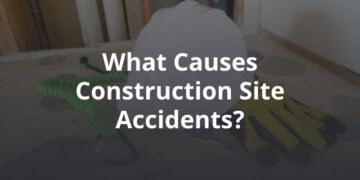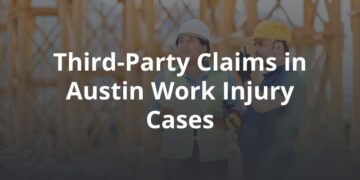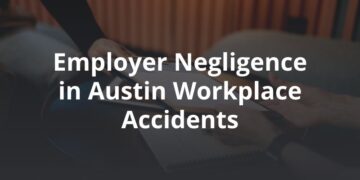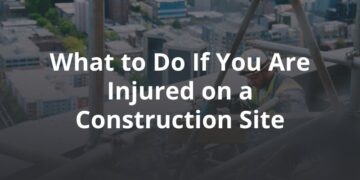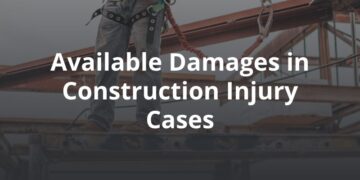Rear-end collisions are, unfortunately, a common occurrence on the roads of Austin, TX. These car accidents can lead to serious injuries and even fatalities. So, why do rear-end collisions happen in Austin, and who’s to blame?
Common Causes of Rear-End Collisions
In most cases, rear-end accidents happen when one vehicle is stationary or moving very slowly, and another is moving at a high speed.
The most common scenarios include:
- Crashing into a slowing vehicle on the highway
- Failing to notice a turn signal and rear-ending the front vehicle
- Not noticing a stopped vehicle at a stop sign or traffic light because of distractions, like texting or changing the radio station
In these situations, the driver of the car in the rear is almost always found at fault. However, there are instances where the rear-ended car may share the blame for the accident.
The Leading Driver’s Responsibility for a Rear-End Collision
The following situations can contribute to the leading driver having a portion of fault for a rear-end crash:
Sudden braking: The leading driver suddenly and unexpectedly slamming on their brakes can leave the trailing driver with little reaction time.
Reversing in traffic: If a leading vehicle reverses in the middle of traffic, the rear vehicle might not have an opportunity to avoid a collision.
Faulty brake lights: If a leading driver’s brake lights do not function properly, the rear driver might not get adequate notice of a change in speed.
Failing to use a turn signal: Failing to use a turn signal while making sudden maneuvers can catch the rear driver off guard, resulting in an accident.
Shared Fault: How It Affects Settlements and Awards
In Texas, the legal concept of comparative negligence helps determine damages in cases where both drivers contributed to the accident. For example, if the driver in front suddenly slammed on the brakes without warning or reason, they may be found partially liable for the accident.
Under Texas law, the amount of compensation a victim may receive is reduced by their percentage of fault. If a victim is found to be 20% at fault for the accident, any damages awarded will be reduced by that same percentage.
However, if the victim’s responsibility is greater than 50%, they cannot recover any damages at all.
Proving Fault for a Rear-End Accident in Austin
Determining fault in rear-end collisions relies upon the concept of negligence. Simply put, if a driver’s negligence led to the accident, they are held legally responsible for any injuries or damages.
For the driver in the rear to be found negligent, the following criteria must be met:
- The driver had a duty to drive safely and follow traffic laws.
- The driver breached that duty – usually by failing to maintain a safe following distance or failing to react in time to the vehicle ahead.
- The breach of duty caused the accident and resulting injuries.
- The injured party suffered damages – such as medical expenses, lost wages, property damage, and/or pain and suffering.
In many cases, proving negligence can be straightforward, especially when the driver in the rear was inattentive or did not maintain adequate distance. However, determining fault can be more complicated if both drivers share responsibility.
Other Parties Who Could Be to Blame for a Rear-End Crash
While the rear driver in a collision is typically found liable for failing to maintain a safe following distance, other parties may share blame in certain situations.
Two potentially responsible parties include:
Manufacturers
If defective auto parts contributed to a rear-end collision, the vehicle’s manufacturer could be held liable under product liability law.
Examples of defective parts that could cause an accident may include faulty brakes, accelerator pedals, or tires. In these cases, a victim might sue the manufacturer for producing a dangerous or defective product, which led to the accident.
Government or Municipality
Poor road conditions, such as potholes, inadequate signage, or lack of proper traffic control devices, can be significant factors in rear-end accidents. If a city or municipality’s negligence in maintaining safe roads contributed to a collision, they might be held liable for personal injury damages.
What To Do After a Rear-End Accident in Austin, Texas
If you are a victim of a rear-end collision in Austin, consider taking the following steps:
- Consult an Austin personal injury attorney – An experienced attorney can help assess your case, determine potentially liable parties, and guide you through the legal process.
- Collect evidence – Obtain photographs of the accident scene, road conditions, and vehicle damage, as well as relevant medical records and witness statements to support your case.
- Keep a record – Maintain a journal detailing the rear-end accident and your recovery to assist in proving the extent of your damages.
Taking these steps can help you build a strong case and secure fair compensation for injuries and damages sustained in a rear-end collision in Austin.
Contact An Austin, TX Car Accident Lawyer from FVF Law
If you’ve been injured in an accident in Austin and need legal help, contact our Austin car accident lawyers at FVF Law to schedule a free consultation with our team.
FVF Law
3101 Bee Caves Rd #301
Austin, TX 78746
United States
(512) 982-9328
